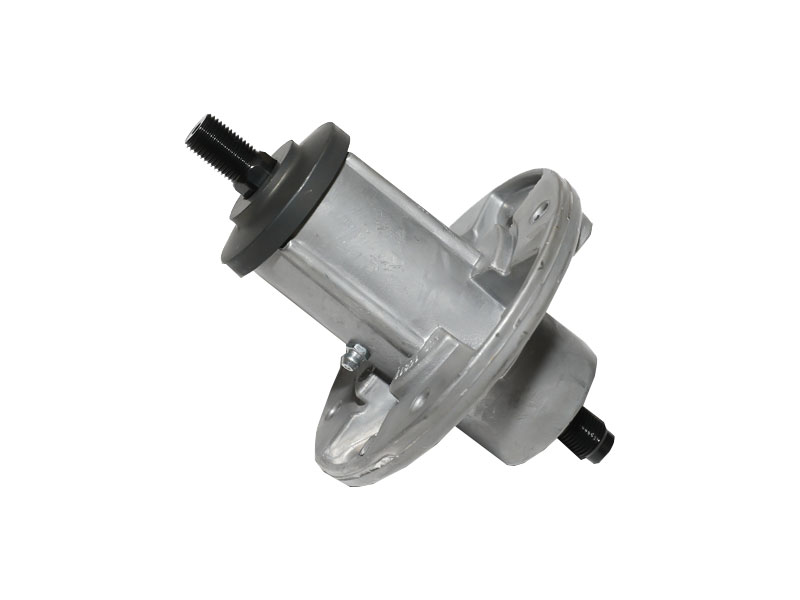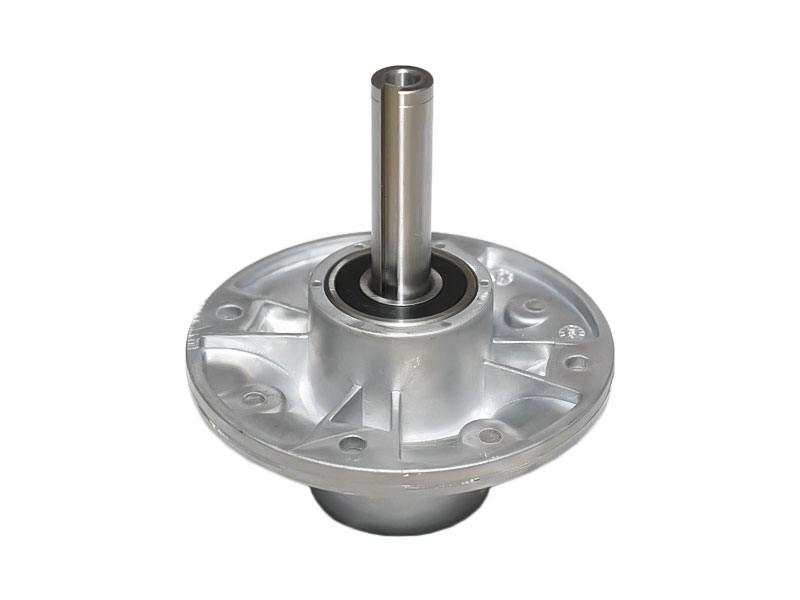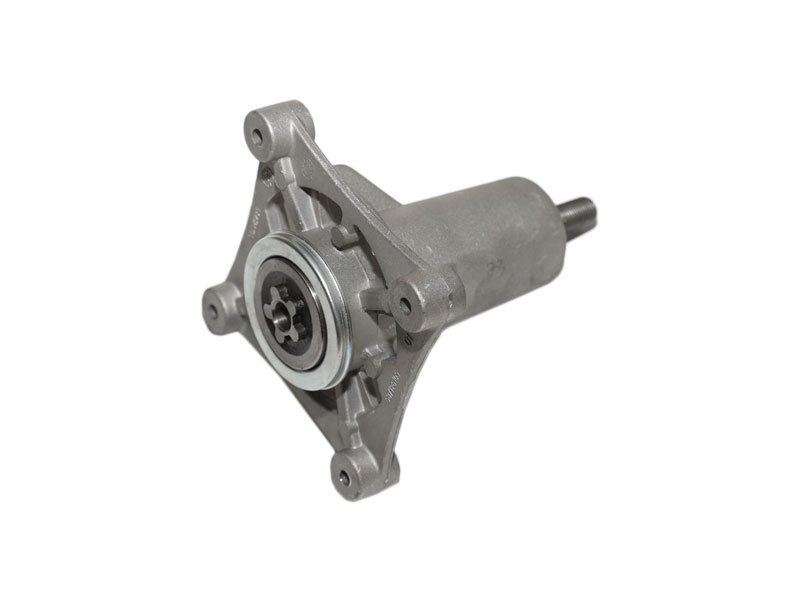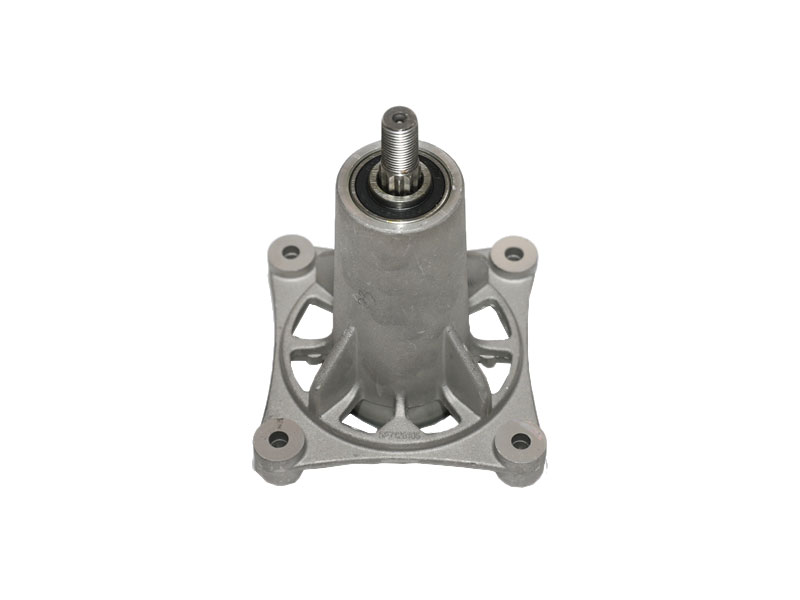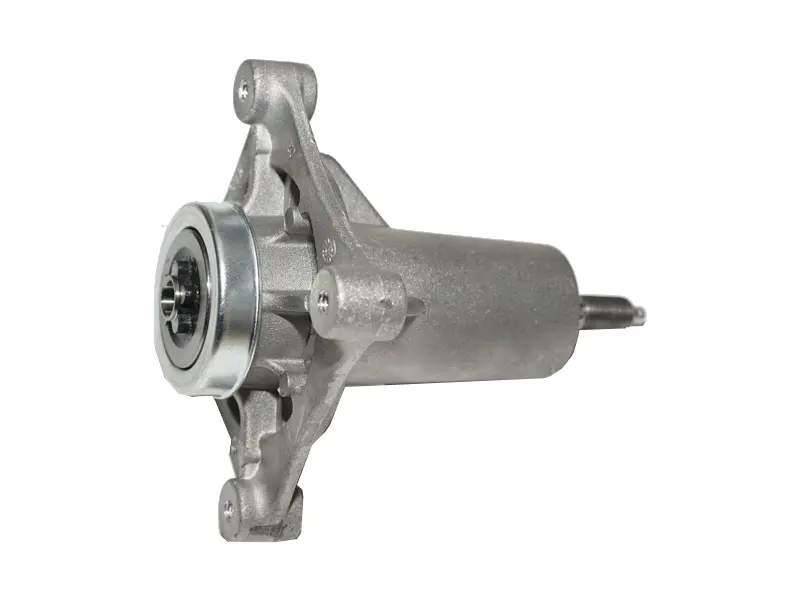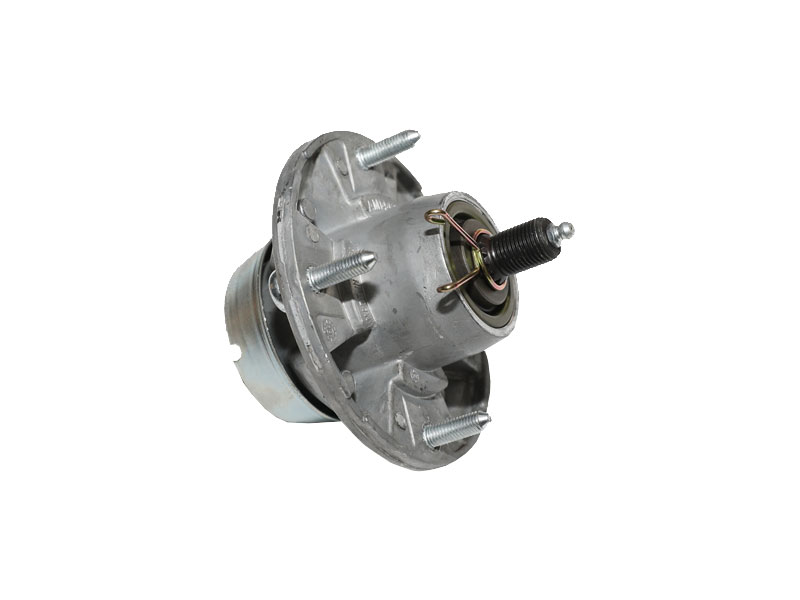Deep groove ball bearings (GB/T 276—2003) originally listed radial ball bearings are the most widely used rolling bearing. It is characterized by low frictional resistance and high speed. It can be used on parts that bear radial load or a combined load that acts on both radial and axial directions. It can also be used on parts that bear axial load, such as low-power motors, Automobile and tractor gearboxes, machine tool gearboxes, general machines, tools, etc.
Basic parameters
Deep groove ball bearings are the most common type of rolling bearings.
The basic deep groove ball bearing consists of an outer ring, an inner ring, a set of steel balls and a set of cages. There are two types of deep groove ball bearings, single row and double row. The deep groove ball structure is also divided into two types: sealed and open. The open type refers to the bearing without a sealed structure. The sealed deep groove ball is divided into dust-proof and oil-proof. seal. The material of the dust-proof seal cover is stamped with steel plate, which simply prevents dust from entering the bearing raceway. The oil-proof type is a contact oil seal, which can effectively prevent the grease in the bearing from overflowing.
The single row deep groove ball bearing type code is 6, and the double row deep groove ball bearing type code is 4. Its simple structure and convenient use make it the most commonly produced and widely used type of bearing.
Deep groove ball bearings are the most common type of rolling bearings.
The basic deep groove ball bearing consists of an outer ring, an inner ring, a set of steel balls and a set of cages. There are two types of deep groove ball bearings, single row and double row. The deep groove ball structure is also divided into two types: sealed and open. The open type refers to the bearing without a sealed structure. The sealed deep groove ball is divided into dust-proof and oil-proof. seal. The material of the dust-proof seal cover is stamped with steel plate, which simply prevents dust from entering the bearing raceway. The oil-proof type is a contact oil seal, which can effectively prevent the grease in the bearing from overflowing.
The single row deep groove ball bearing type code is 6, and the double row deep groove ball bearing type code is 4. Its simple structure and convenient use make it the most commonly produced and widely used type of bearing.
working principle
Deep groove ball bearings mainly bear radial load, but can also bear radial load and axial load at the same time. When it only bears radial load, the contact angle is zero. When the deep groove ball bearing has a large radial clearance, it has the performance of an angular contact bearing and can bear a large axial load. The friction coefficient of the deep groove ball bearing is very small and the limit speed is also high.
Bearing characteristics
Deep groove ball bearings are the most commonly used rolling bearings. Its structure is simple and easy to use. It is mainly used to bear radial load, but when the radial clearance of the bearing is increased, it has a certain performance of angular contact ball bearing and can bear the combined radial and axial load. When the speed is high and thrust ball bearings are not suitable, they can also be used to withstand pure axial loads. Compared with other types of bearings with the same specifications and dimensions of deep groove ball bearings, this type of bearing has a small friction coefficient and a high limit speed. But it is not resistant to impact and is not suitable for heavy loads.
After the deep groove ball bearing is installed on the shaft, the axial displacement of the shaft or the housing can be restricted within the axial clearance of the bearing, so it can be axially positioned in both directions. In addition, this type of bearing also has a certain degree of aligning ability. When it is inclined 2'-10' relative to the housing hole, it can still work normally, but it will have a certain impact on the life of the bearing.
Deep groove ball bearings mainly bear radial load, but can also bear radial load and axial load at the same time. When it only bears radial load, the contact angle is zero. When the deep groove ball bearing has a large radial clearance, it has the performance of an angular contact bearing and can bear a large axial load. The friction coefficient of the deep groove ball bearing is very small and the limit speed is also high.
Bearing characteristics
Deep groove ball bearings are the most commonly used rolling bearings. Its structure is simple and easy to use. It is mainly used to bear radial load, but when the radial clearance of the bearing is increased, it has a certain performance of angular contact ball bearing and can bear the combined radial and axial load. When the speed is high and thrust ball bearings are not suitable, they can also be used to withstand pure axial loads. Compared with other types of bearings with the same specifications and dimensions of deep groove ball bearings, this type of bearing has a small friction coefficient and a high limit speed. But it is not resistant to impact and is not suitable for heavy loads.
After the deep groove ball bearing is installed on the shaft, the axial displacement of the shaft or the housing can be restricted within the axial clearance of the bearing, so it can be axially positioned in both directions. In addition, this type of bearing also has a certain degree of aligning ability. When it is inclined 2'-10' relative to the housing hole, it can still work normally, but it will have a certain impact on the life of the bearing.
Structure and classification
Bearing structure
Deep groove ball bearings have a simple structure and are easier to achieve higher manufacturing accuracy than other types. Therefore, they are easy to produce in series and have lower manufacturing costs, and they are extremely common. In addition to the basic type, deep groove ball bearings also have various modified structures, such as: deep groove ball bearings with dust cover, deep groove ball bearings with rubber seals, deep groove ball bearings with stop grooves, and Deep groove ball bearing with large load capacity with ball gap, double row deep groove ball bearing.
Bearing type
Deep groove ball bearings are mainly used to bear radial loads, but they are also commonly used to bear combined radial and axial loads. Especially when the speed of mechanical equipment is very high and thrust bearing is not suitable, the bearing can be used to bear bidirectional pure axial load, and it does not need maintenance during operation. It is a kind of bearing with low price and wide application. The models of deep groove ball bearings are: deep groove ball bearings (60000 type); deep groove ball bearings with a stop groove on the outer ring (60000N type); deep groove ball with a dust cover on one side and a stop groove on the other side Bearing (60000-ZN type); Deep groove ball bearing with dust cover on both sides and stop groove on the outer ring (60000-2ZN type); Deep groove ball bearing with dust cover on one side (60000Z type); both sides Deep groove ball bearing with dust cover (60000-2Z type); deep groove ball bearing with sealing ring on one side (60000-LS type, 60000-RZ type); deep groove ball bearing with sealing ring on both sides (60000- 2LS type, 60000-2RZ type); flanged outer ring deep groove ball bearing (F60000 type); flanged outer ring deep groove ball bearing with dust cover on one side (F60000-Z type); with dust cover on both sides There are 11 types of flanged outer ring deep groove ball bearings (F60000-2Z type). [2]
According to the size of deep groove ball bearings can be divided into:
(1) Miniature bearings-bearings with a nominal outer diameter range of 26mm or less;
(2) Small bearings-bearings with a nominal outer diameter range of 28-55mm;
(3) Small and medium-sized bearings-bearings with a nominal outer diameter range of 60-115mm;
(4) Medium and large bearings-bearings with a nominal outer diameter range of 120-190mm
(5) Large bearings-bearings with a nominal outer diameter range of 200-430mm;
(6) Extra-large bearings-bearings with a nominal outer diameter range of 440mm or more.
Processing form
The processing forms of deep groove ball bearing parts are as follows:
1. Multi-process processing: Generally, bearing production requires 20-40 processes, with more than 70 processes.
2. Forming processing: The working surfaces of bearing parts are all rotary forming surfaces, which are suitable for processing by forming methods.
3, precision machining: most of the surface of the bearing parts must be grinded, and the grinded size and geometric accuracy are in μm.
Bearing structure
Deep groove ball bearings have a simple structure and are easier to achieve higher manufacturing accuracy than other types. Therefore, they are easy to produce in series and have lower manufacturing costs, and they are extremely common. In addition to the basic type, deep groove ball bearings also have various modified structures, such as: deep groove ball bearings with dust cover, deep groove ball bearings with rubber seals, deep groove ball bearings with stop grooves, and Deep groove ball bearing with large load capacity with ball gap, double row deep groove ball bearing.
Bearing type
Deep groove ball bearings are mainly used to bear radial loads, but they are also commonly used to bear combined radial and axial loads. Especially when the speed of mechanical equipment is very high and thrust bearing is not suitable, the bearing can be used to bear bidirectional pure axial load, and it does not need maintenance during operation. It is a kind of bearing with low price and wide application. The models of deep groove ball bearings are: deep groove ball bearings (60000 type); deep groove ball bearings with a stop groove on the outer ring (60000N type); deep groove ball with a dust cover on one side and a stop groove on the other side Bearing (60000-ZN type); Deep groove ball bearing with dust cover on both sides and stop groove on the outer ring (60000-2ZN type); Deep groove ball bearing with dust cover on one side (60000Z type); both sides Deep groove ball bearing with dust cover (60000-2Z type); deep groove ball bearing with sealing ring on one side (60000-LS type, 60000-RZ type); deep groove ball bearing with sealing ring on both sides (60000- 2LS type, 60000-2RZ type); flanged outer ring deep groove ball bearing (F60000 type); flanged outer ring deep groove ball bearing with dust cover on one side (F60000-Z type); with dust cover on both sides There are 11 types of flanged outer ring deep groove ball bearings (F60000-2Z type). [2]
According to the size of deep groove ball bearings can be divided into:
(1) Miniature bearings-bearings with a nominal outer diameter range of 26mm or less;
(2) Small bearings-bearings with a nominal outer diameter range of 28-55mm;
(3) Small and medium-sized bearings-bearings with a nominal outer diameter range of 60-115mm;
(4) Medium and large bearings-bearings with a nominal outer diameter range of 120-190mm
(5) Large bearings-bearings with a nominal outer diameter range of 200-430mm;
(6) Extra-large bearings-bearings with a nominal outer diameter range of 440mm or more.
Processing form
The processing forms of deep groove ball bearing parts are as follows:
1. Multi-process processing: Generally, bearing production requires 20-40 processes, with more than 70 processes.
2. Forming processing: The working surfaces of bearing parts are all rotary forming surfaces, which are suitable for processing by forming methods.
3, precision machining: most of the surface of the bearing parts must be grinded, and the grinded size and geometric accuracy are in μm.
 English
English 中文简体
中文简体 Español
Español svenska
svenska




